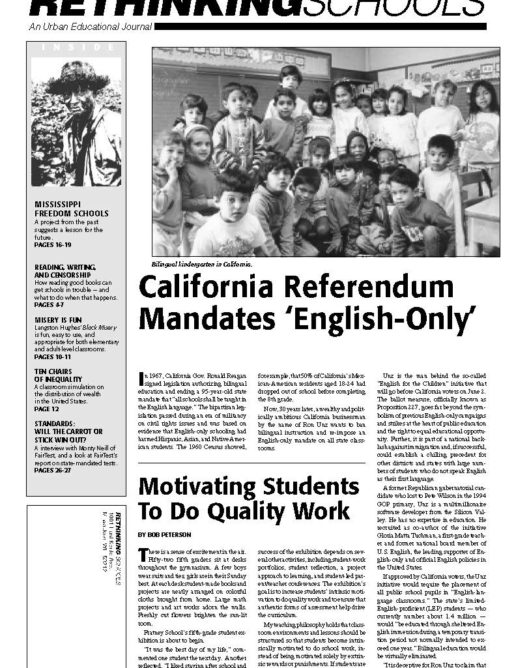Preview of Article:
Know the Law
In September 1975, three members of the school board of the Island Trees school district on New York’s Long Island attended a conference of the conservative group, Parents of New York United. There they received a list of “objectionable” books, ranging from “Soul On Ice” by Eldridge Cleaver to “The Fixer” by Bernard Malamud and “The Best Short Stories by Negro Writers,” edited by Langston Hughes. The board members discovered that nine of the listed books were in their high school library and another was in the junior high library. They directed that the books be removed, justifying their action on the grounds that the books were “anti-American, anti-Christian, anti-[Semitic], and just plain filthy.” They further argued that “[it] is our duty, our moral obligation, to protect the children in our schools from this moral danger as surely as from physical and medical dangers.”
Seven years later, in June 1982, the U.S. Supreme Court ruled in a narrow 5-4 decision that school officials “may not remove books from school library shelves simply because they dislike the ideas contained in those books. …”
Justice William J. Brennan, in the lead opinion, argued that “Just as access to ideas makes it possible for citizens generally to exercise their rights of free speech and press in a meaningful manner, such access prepares students for active and effective participation in the pluralistic, often contentious society in which they will soon be adult members.”
But even Brennan conceded that school boards “have significant discretion to determine the content of their school libraries.” That phrase, and the opinions of the court minority (which included current U.S. Supreme Court Chief Justice William Rehnquist) are important cautions. Whether one agrees or not, the Supreme Court has recognized that censorship issues in the schools abide by different rules than censorship cases in public libraries, bookstores, and other non-school settings.
The heart of the complexities involve the conflicting views of the role of public schools in society. As the book “Censorship and Selection” notes: “If a school’s role is seen primarily as one of indoctrination and inculcation of community values, school boards will have almost unlimited discretion in the selection and removal of materials that are part of the school’s curriculum. If, however, the view is that the school is a marketplace of ideas where students may have access to a variety of viewpoints, the limits imposed upon the school board are expanded considerably. Both these views are held to varying degrees by judges at all levels, including the United States Supreme Court.”</p

